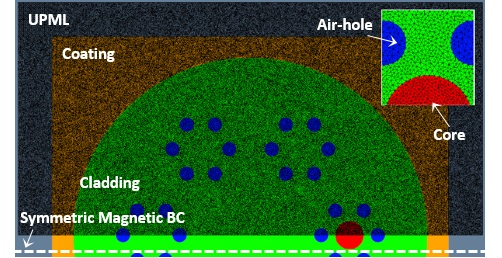Modal analysis is a pivotal component of modeling optical structures. OptiMode is a robust CAD platform for the analysis and design of waveguide structures. This tool empowers users to thoroughly examine various waveguide structures, identify supported modes, and determine key characteristics such as mode profile and effective index.
OptiMode is available both as a stand-alone application and integrated into Optiwave’s component-level propagation tools, OptiFDTD and OptiBPM, for use as a modal injection in the source components.


